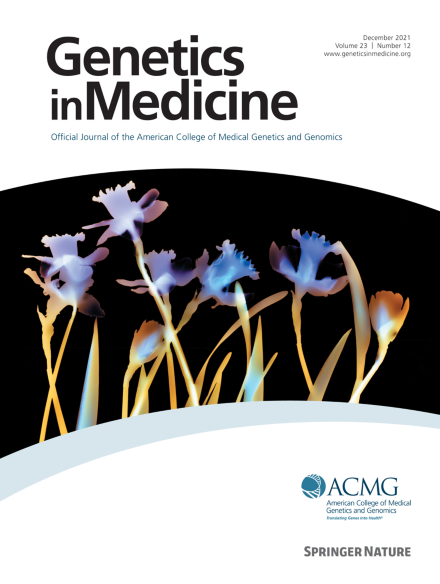Patterns of X-linked inheritance: A new approach for the genome era
IF 6.6
1区 医学
Q1 GENETICS & HEREDITY
引用次数: 0
Abstract
Purpose
The concepts of X-linked (XL) dominant and recessive inheritance originated long before dosage compensation for X chromosome genes was understood, but now have no scientific basis. However, misunderstanding of the underlying biology persists, prompting our reassessment of XL inheritance.
Methods
We reviewed data on penetrance, expressivity, and X chromosome inactivation (XCI) for 55 XL genes and 57 XL disorders, and examined variations in inheritance based on disease severity, XCI status, cell selection, and other factors.
Results
Our analysis demonstrated widely varying penetrance among heterozygous females that was related to severity of the phenotype particularly in males, the degree of cell selection shown by XCI patterns, cell autonomous or non-cell autonomous function of the gene product, and rare cellular interference.
Conclusion
The conventional classification of XL inheritance into dominant and recessive subtypes is biologically flawed and should be retired. A more nuanced framework for understanding XL disorders is needed that accounts for the underlying biological complexity, and we propose 4 new groups of XL disorders with different patterns that should improve genetic diagnosis and counseling in families with XL disorders.

x连锁遗传模式:基因组时代的新方法。
x链(XL)的概念“显性”和“隐性”遗传早在X染色体基因的剂量补偿被理解之前就已经存在,但现在没有科学依据。为了解决对人类XL遗传的持续误解,我们回顾了55个XL基因和57个XL疾病的外显率、表达性和X染色体失活的数据。我们的分析表明,杂合子女性的外显率差异很大,遗传模式的差异取决于细胞选择的程度、男性表型的严重程度、基因产物的细胞自主或非细胞自主功能以及其他因素。我们提出了四组新的具有遗传模式变异的XL疾病,并建议废除人类和其他哺乳动物的XL“显性”和“隐性”遗传的生物学缺陷概念。
本文章由计算机程序翻译,如有差异,请以英文原文为准。
求助全文
约1分钟内获得全文
求助全文
来源期刊

Genetics in Medicine
医学-遗传学
CiteScore
15.20
自引率
6.80%
发文量
857
审稿时长
1.3 weeks
期刊介绍:
Genetics in Medicine (GIM) is the official journal of the American College of Medical Genetics and Genomics. The journal''s mission is to enhance the knowledge, understanding, and practice of medical genetics and genomics through publications in clinical and laboratory genetics and genomics, including ethical, legal, and social issues as well as public health.
GIM encourages research that combats racism, includes diverse populations and is written by authors from diverse and underrepresented backgrounds.
 求助内容:
求助内容: 应助结果提醒方式:
应助结果提醒方式:


